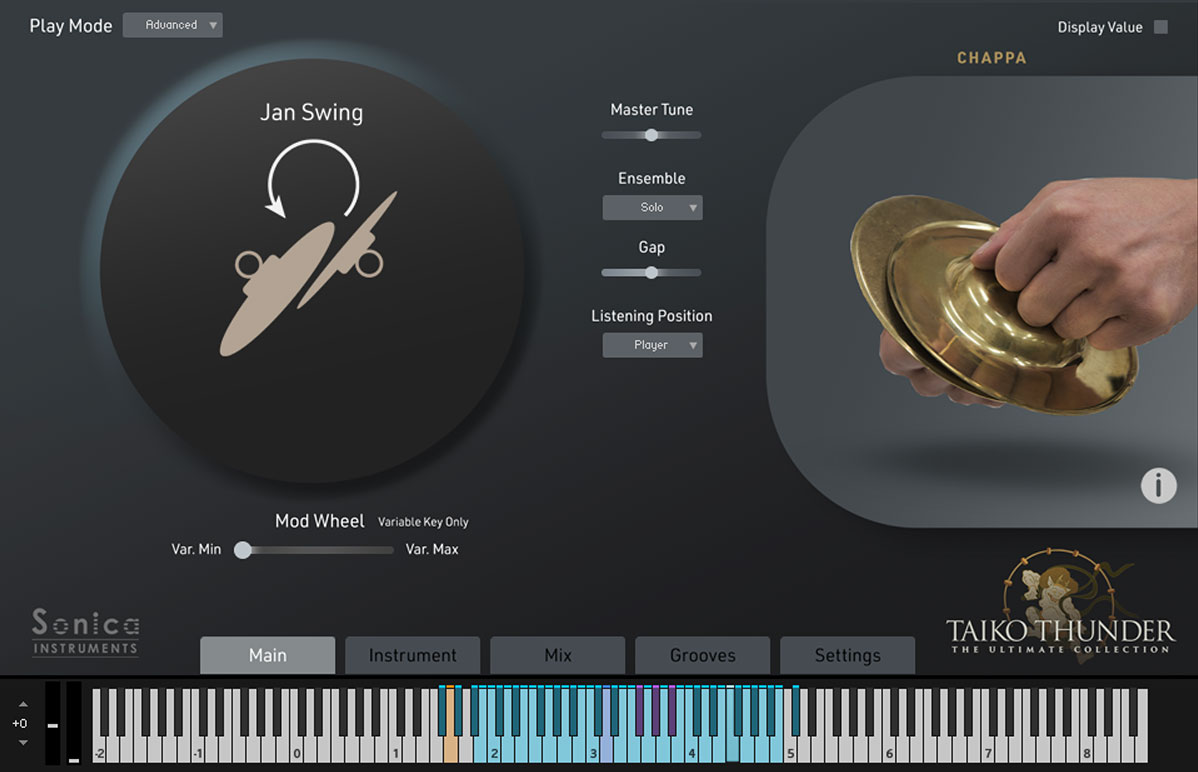
Know Your Taiko: Meet the Instruments That Define a Tradition — Part 4:
In the previous posts in this blog series, we looked at various taiko instruments included in TAIKO THUNDER: The Ultimate Collection. However, the library also contains a number of percussion instruments and kakegoe vocal sound effects, so let’s check them out.
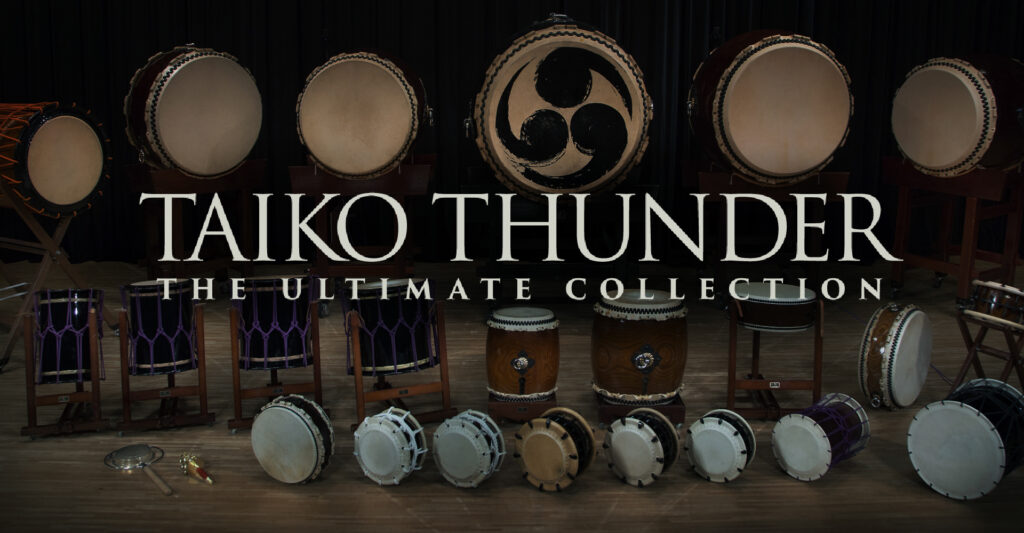
$695
TAIKO THUNDER: The Ultimate Collection is, in essence, 20 separate sound libraries — consisting of 16 taiko instruments and four percussion instruments — that cover all taiko sounds necessary for modern music making.
The collection features realistic sound variations from different hitting positions, special tone-shaping parameters for finding the perfect sound, and as many as seven separate mic channels with individual controls including hall reverb. All these features add up to a next-generation taiko library for every musical situation.
Shoko
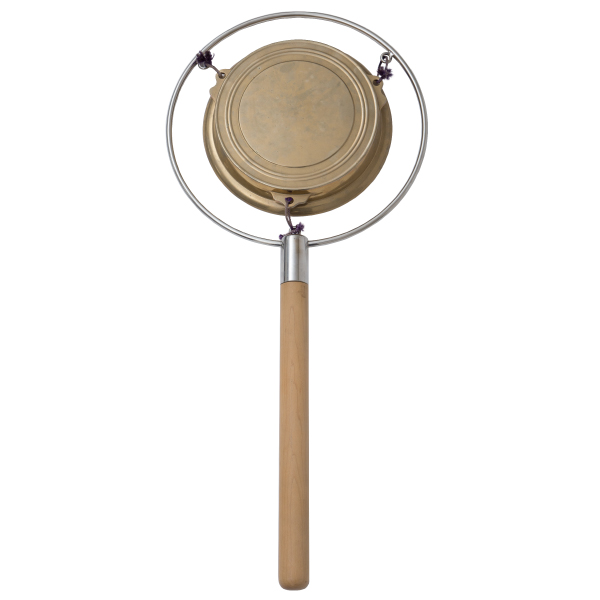
The shoko is a gong held in the left hand and stroked with the right hand using a bachi called a shumoku, which has a deer horn tip.
Although the shoko is used in gagaku and Buddhist rituals, this library includes a shoko variant attached to a frame with a handle that is used as a rhythmic instrument in awa odori dances.
It has the hard, sharp tone characteristic of metallic instruments, which is ideal for setting rhythmic tempos and leading an ensemble.
Chappa
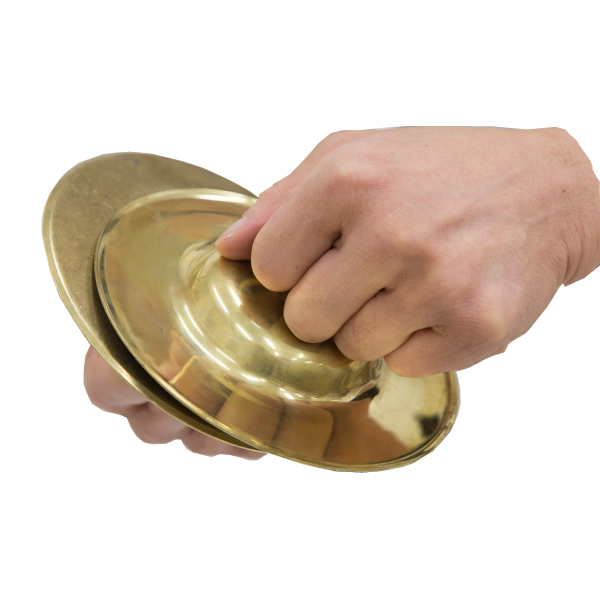
The chappa is a pair of small handheld metallic cymbals played by striking them together. It is used as a rhythmic instrument accompanying taiko performances and in folk music. It is sometimes called a hand clapper or copper clapper.
The chappa allows for a variety of tonal expressions by controlling the strike location and intensity. In addition to open and closed sounds, the cymbals can be rubbed or clashed together for a lingering reverberant sound. The chappa was originally only an accompanying instrument, but in recent years modern playing styles have been devised and solo chappa performances are on the rise.
Kagurasuzu
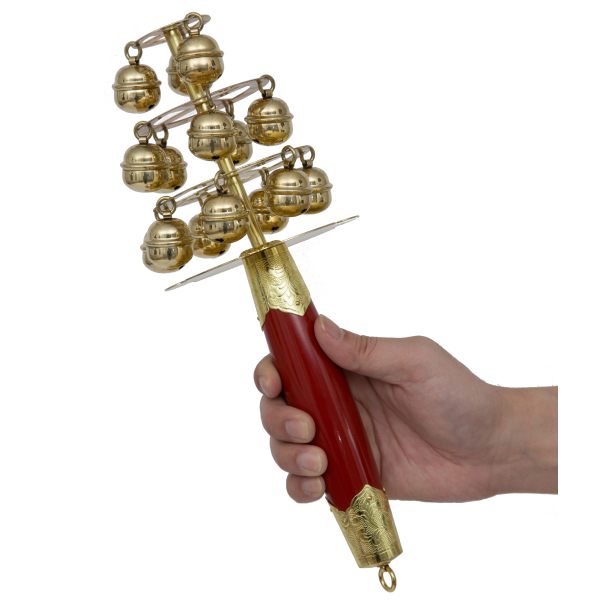
The kagurasuzu is a bell tree traditionally held by miko [shrine maidens] when performing kagura dances at Shinto rites. It is also used in Noh and Kabuki plays. It is sometimes called a sanbansosuzu because it is used in by the Sanbanso character in the Noh play Okina.
The kagurasuzu has 15 bells, organized in three tiers from the bottom of seven, five, and three bells, and has a woven handle at the end. The bells are sounded by shaking the arm or twisting the wrist.
Kakegoe
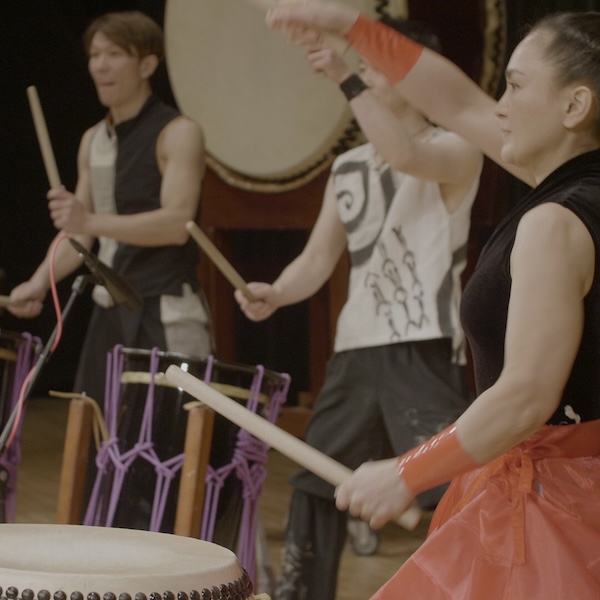
An integral part of any taiko ensemble are the performers’ kakegoe calls. The library contains such familiar calls as “Hai” and “So~re”.
In addition to Male 1, Male 2, Male 3, and Female solo kakegoe calls, the library features Three Male and Three Male + Female combo kakegoe calls. Use these to add color to any musical piece.
